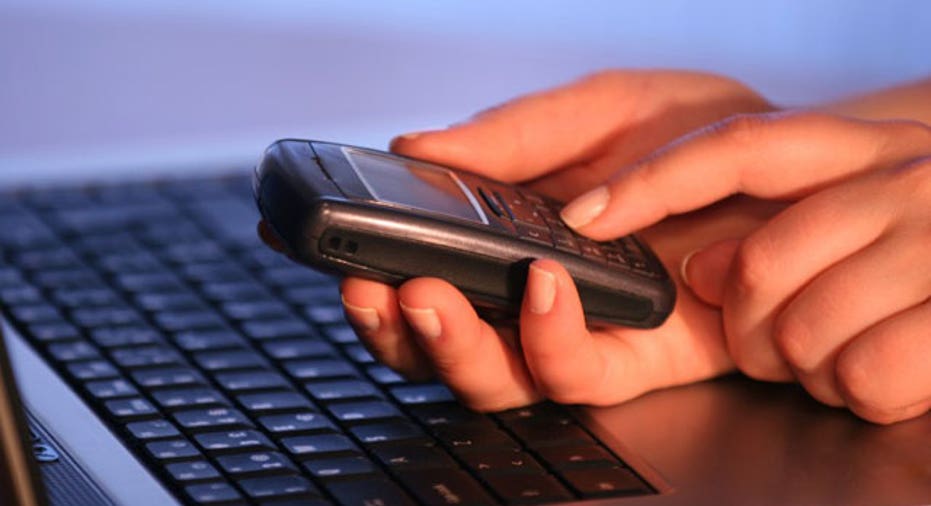What's App With Mobile Banking Today?

Today's consumers are Internet-savvy and want the convenience of checking their bank balances on the fly and performing transactions as quickly and effectively as possible.
In response to the ever-increasing demand for portability and convenience, many financial institutions have been ramping up their mobile banking efforts and coming up with ways to please today's consumers.
Here are some mobile banking trends you can expect.
Younger Customer Base
More financial institutions are getting into mobile banking to attract younger customers.
The Credit Union of Texas offers a free mobile application with which consumers can view their account balances and account history, and transfer funds between bank accounts.
The app also uses GPS to find the nearest branch offices and ATM locations. Customers can research rates with the app to learn more about the bank's offerings. Credit union information will be available via social media sites Facebook and Twitter, and the apps will be available for the iPod Touch, iPad, iPhone and Android devices.
First Tennessee Bank, one of the first regional banks to offer mobile check deposits, uses a system that enables customers to scan the front and back of a physical check and upload it directly to the bank site. Other banks allowing mobile deposits include Bank of America, which has launched a mobile deposit app, and JPMorgan Chase, which allows customers to scan checks through its Quick Deposit program. Then, the images are electronically transmitted to Chase.
Digital Wallets and Mobile Payments
According to Bill Ready, CEO of Chicago-based Braintree, a company that handles online payments for online merchants such as LivingSocial and OpenTable, says the biggest thing in mobile banking is the digital wallet, such as those offered by Google and Visa.
With digital wallets, consumers can pay for items using their smartphones.
"Digital wallets will actually be much more game-changing for purchases conducted entirely on the mobile device," Ready says, and adds that many online retailers have mobile shopping capabilities, including Amazon, Zappos and LivingSocial.
However, while smartphone technology has made shopping and browsing on a mobile device easier, the checkout process is not as advanced.
"It involves typing credit card information into a phone. It is not uncommon for mobile application providers to see abandon rates at checkout of 95% or more," Ready says. Abandon rates reflect the percentage of customers who disconnect without completing the transaction.
Jon Squire, senior vice president of business development and strategy at CorFire, the mobile commerce company, says mobile payments will be a piece of the retail equation, but the broader offering that goes beyond checking a balance or getting transaction information is what will entice consumers and drive bank innovation, such as buying a cup of coffee with your phone.
As far as where banking technology is headed, Squire says growth in mobile banking and online banking is trending toward consumers who want to choose when, how and where they interact with their bank. He says a bank that embraces the technologies allowing these more convenient interactions, such as real-time remote check deposit, and marries them to hybrid products, such as virtual gift cards, will be successful.
Virtual gift cards are cards or certificates issued by a merchant and immediately delivered to the recipient via email or text message. The recipient can use this electronic card to make purchases online.
NFC Technology
Near-field communication, or NFC, technology is gaining momentum in the mobile banking area. According to Squire, much of the conversation is not around the technical ability of banks, merchants or carriers to provide the platform, but rather the economics of it.
"We are now at a stage where we see this beginning to gel with Google Wallet bringing several key players or payment vehicles together. We hope to see more of it with the Isis launch," he says.
Isis, a mobile payment network (mobile wallet), is a joint venture between AT&T Mobility, T-Mobile USA and Verizon Wireless. It's projected to launch NFC-enabled phones early this year.
With Isis, consumers in a pilot project in Austin, Texas, will use these phones to pay merchants, redeem coupons and store merchant loyalty cards. The Isis system will allow customers to shop by swiping their smartphones using NFC technology. These smartphones can make point-of-sale purchases and redeem cash-back rewards at subscribing merchant locations. After this initial launch, the system will be implemented throughout the country.
Andy Schmidt, a research director in commercial banking and payments at TowerGroup, a Boston-based financial services research firm, says mobile banking is evolving to include tablet computers. Some banks, such as Bank of America, are offering iPad-enabled banking applications.
Schmidt says tablets may be utilized in bank branches to engage consumers and improve customer service.
"Online and mobile banking are converging in that online banking is adopting mobile's simpler, easier interfaces, while many of online's higher functions are making their way into the mobile offering," Schmidt says.
Pick up ATM Cash Via Text
Although it is a difficult to predict the future of mobile banking, Schmidt says that he already is seeing banks offering technology that allows customers to send a text message to an ATM for cash withdrawals.
"I believe you will see banks trying to incorporate mobile wallets into their mobile banking offering to create a seamless mobile experience that keeps the bank central to the relationship," Schmidt says.